#kūkū
Text
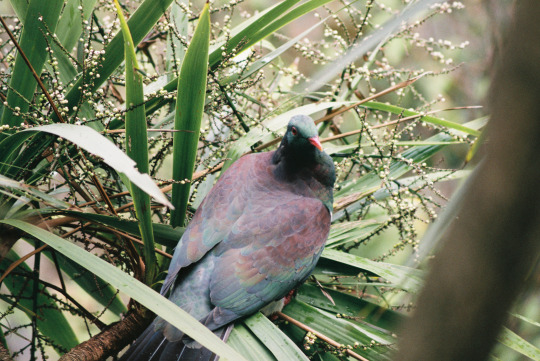
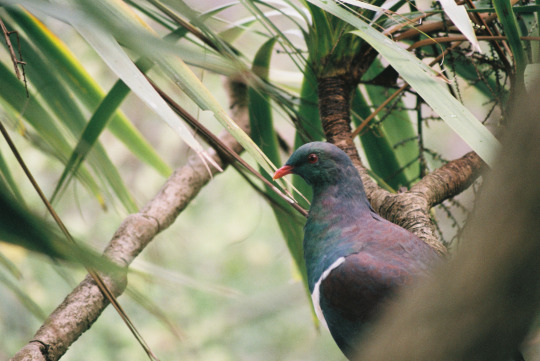

Kererū - 2021
#kererū#kūkū#kūkupa#film photography#photography#nature photography#bird photography#birdwatching#new zealand#100-300mm#pigeon#woodpigeon
19 notes
·
View notes
Text
E koekoe te tūī, e ketekete te kākā, e kūkū te kererū
“The tūī chatters, the parrot gabbles,
the wood pigeon coos.”
Maori Whakataukī, meaning "it takes all kinds".
The variety and difference in the birds in NZ reflects the differences in people. We are all different, but we are all people, and there is a universality in our hopes, dreams, experiences, and desires. This whakataukī is expressing that should remove judgment of differences between us.
1 note
·
View note
Photo

alani: kūkū I’m so glad you came over! i wanted to show you pics from my musical. well I’m only in ensemble but i have so many pictures of us all together it’s so exciting!
masina: oh really? can’t wait to see it take place!
#alani bradberry#masina tuhoe#not so berry#not so berry challenge#nsb#sims 4#the sims 4#ts4#sims 4 gameplay#sims 4 legacy
7 notes
·
View notes
Link

The kererū, also known as kūkū or kūkūpa, is a native wood pigeon endemic to New Zealand's north and south island.
The large bird, around 50 centimeters from beak to tail, is famous around the world for its spectacular flight aerobatics, the "whoosh" of its wings and its complete lack of self-discipline.
The conservation group Forest and Bird, which organized the annual competition, described the victor in the most endearing terms: "clumsy, drunk, gluttonous, and glamorous."
True to its reputation, the kererū lives life to the fullest. In its spare time, the metallic green, grey and white pigeon likes to gorge itself on rotten fruit, which it finds on the forest floor.
In particularly bounteous seasons, the abundance of fermented treats can leave the pigeons so ridiculously drunk they end up falling from the trees.
In one such summer, a bird sanctuary in New Zealand was inundated with inebriated kererū brought in by concerned locals.
"They were coming in absolutely drunk as can be," Robert Webb, the manager of The Native Bird Recovery Centre in Whangarei, told The New Zealand Herald.
"It was ridiculous, we were getting people bringing armfuls of these flaming drunk pigeons."
AMAZING 😂
28 notes
·
View notes
Photo
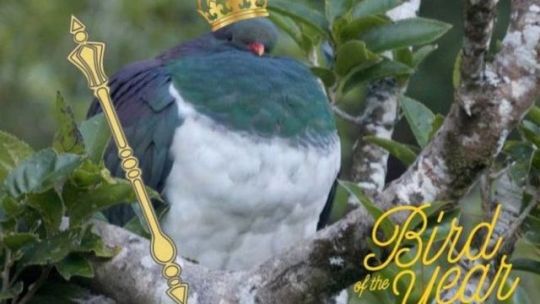
Drinking alcohol is dangerous at the best of times. Intoxication in the treetops really raises the stakes.
This impressive albeit risky feat is just one of the many reasons why the kererū pigeon (Hemiphaga novaeseelandiae) is the "absolute unit".
In 2018, this "devourer of fruit" was named Bird Of The Year in New Zealand, winning the popular vote by a clear margin.
The kererū, also known as kūkū or kūkūpa, is a native wood pigeon endemic to New Zealand's north and south island.
The large bird, around 50 centimetres from beak to tail, is famous around the world for its spectacular flight aerobatics, the 'whoosh' of its wings and its complete lack of self-discipline.
The conservation group Forest and Bird, which organised the annual competition, described the victor in the most endearing terms: "clumsy, drunk, gluttonous, and glamorous".
6 notes
·
View notes
Text
https://www.doc.govt.nz/nature/native-animals/birds/birds-a-z/nz-pigeon-kereru/
Csak 650 g? 2 kilóra tippeltem :D
0 notes
Photo

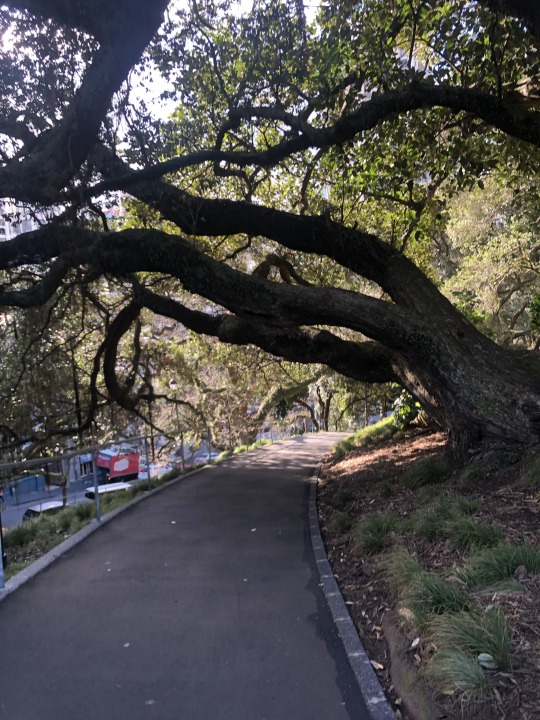
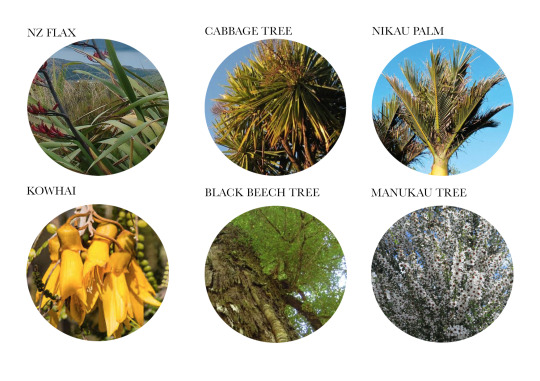
RESEARCH ON NZ FORESTS
The above photo is when I visited a Waterfall up North in New Zealand and I really noticed that amazing forest we have in New Zealand. Having a visit to this waterfall made me really understand all the different layers the forest has to offer.
In my pocket forest I want to plant native trees and shrubs to attract native birds. As the native flora of NZ is quite unique as it develop in isolation for many of years. Upon research on the New Zealand DOC site I found out what native trees and shrubs native bird are attracted to this includes....
NZ Flax which supports a large amount of animals birds such as the Tui, Bellbirds/korimako, Saddlebacks/tīeke, Short tailed bats/pekapeka, Geckos and several types of insects enjoy nectar from the flax flower. Flax snails, also often shelter under flax bushes. They don’t eat any part of the flax, but rather they munch on fallen leaves from native broadleaved trees. I believe making the NZ Flax an essential to have in my pocket forest as it supports a broad diversity of flora and fauna
The Kōwhai which native birds such as the tui, bellbird, kākā and New Zealand pigeon/kererū/kūkū/kūkupa all benefit from kōwhai trees.
The Nīkau sprouts large clusters of mauve flowers that burst from the base of the lowest branch. The flowers are sticky and sweet with nectar, which attracts insects, especially bees.While insects are probably the main pollinators, birds such as tui, bellbirds and silvereyes also enjoy the nīkau nectar. Flowers occur throughout the entire year.The bright red nīkau fruits take about one year to ripen and are an important food source for native birds, particularly the wood pigeon/kererū and kākā.
The Cabbage Tree has lovely scented flowers in early summer, which turn into bluish-white berries that birds love to eat. Its a nectar producer from the flowers, so it is a favourite with Bellbird, Tui and Kereru. Cabbage trees also produce berries that provide food. It is a very tough tree and will withstand most conditions.
Black Beech (Fuscospora solandri) is an evergreen tree growing to about twenty-five metres tall with a trunk about one metre through.This tree can produce millions of seeds, and during a heavy seed fall about 50 million seeds (about 250 kg of seeds) will fall per hectare which are good for the birds. Small-scale insect sucks the sap of beech trees and produces a sweet substance called ‘honeydew’ and native birds such as Tui, bellbirds, kaka, bats, native insects, and lizards are attracted to this honeydew for food.
Manukau Tree all the forms of this species are unified by their sharp-tipped leaves, large, solitary white or pink-flushed flowers, with distinctive short, dark red stamens, and persistent greyish-white nut-like capsules. Mānuka/kahikātoa plants are sometimes covered with sooty mould, a black fungus that feeds on the honeydew produced by scale insects. Mānuka/kahikātoa flowers smell very sweet and they provide an important source of pollen and nectar for native bees, flies, moths, beetles and geckos.
However in my site I don’t want to have to many windows as having a pocket forest when planting too close to windows can confuse birds due to the reflection and a number of kererū are killed every year trying to fly through panes of glass which is something I completely want to avoid.
0 notes
Text
Transmedia - Other Species to Introduce
Birds
Bellbird
Bellbirds have a very important role in the New Zealand ecosystem as they assist with the regeneration of the forest by dispersing seeds from the fruits they eat and also pollinating plants from feeding on flowers.
Silvereye
They are not truly native as they are found in Australia as well. They are found throughout New Zealand and its offshore and outlying islands, occurring in most vegetated habitats, including suburban gardens, farmland, orchards, woodlands and forests. Easily identified with the white ring surrounding their eye with green and cream plumage. Can sometimes feed on aphids. They may spread weed seeds through ingestion of small fruits and they are known to spread seeds of native trees and shrubs, including kahikatea and coprosmas. Silvereyes assist with pollination of some tree species such as kowhai and fuchsia when feeding on nectar.
Dotterel
Endemic found on east coast beaches in the northern North Island, but is sparsely distributed around much of the rest of the country.
Insects
Puriri Moth
Characterised by their large size and bright green(male) and yellow(female) colour. Puriri moths are found in forests and bush throughout the North Island
NZ Glowworm
Endemic fungus gnat that produces a blue green bioluminescence at its larval stage. Usually habitate caves and sheltered banks with high humidity. Uses sticky threads to catch prey.
Plants
Flax, Harakeke
One of our most ancient plant species, actually a lily. Provides food, nectar and shelter for native organisms. Found throughout New Zealand, have many uses for humans as well, was once one of our biggest exports.
Manuka
Although Manuka trees are also found in Australia, they are much more common in New Zealand and some species are native (Kanuka). Chemical tests have shown that mānuka/kahikātoa pollen, and honey derived from it, contains powerful insecticides and anti-bacterial agents that can help fight intestinal worms and bacterial infections.
Kowhai
Most species are common throughout the country. Tui and bellbird and New Zealand wood pigeon/kererū/kūkū/kūkupa feast on leaves and flowers – kōwhai are an important seasonal nectar food source for them.
Nikau Palm
The Nikau is the only palm species native to mainland New Zealand and it is the world's most southerly growing palm. Kererus really like the ripe fruits from the nikau palms.
Lancewood, Horoeka
Common throughout shrubs and lowland in the NZ. Has very different juvenile and adult forms, heteroblasty.
Kowharawhara
The species generally grow in forests, swamps and amongst low alpine vegetation. Has sweetly scented flowers and fruit which provide nourishment for birds and insects.
http://www.terrain.net.nz/friends-of-te-henui-group/new-plant-page/astelia-solandri-kowharawhara.html
Notes:
It is important to only use locally sourced plants as some plant species are very variable so it would suit local terrain.
References
Auckland Council. (2013, August 27). Indigenous terrestrial and freshwater ecosystems of Auckland. Retrieved from https://www.aucklandcouncil.govt.nz/plans-projects-policies-reports-bylaws/our-plans-strategies/unitary-plan/history-unitary-plan/documentssection32reportproposedaup/appendix-3-11-4.pdf
New Zealand Birds Online. (2013). New Zealand dotterel. Retrieved from http://nzbirdsonline.org.nz/species/new-zealand-dotterel
Martin NA. 2010, revised 2018. Puriri moth - Aenetus virescens. Interesting Insects and other Invertebrates. New Zealand Arthropod Factsheet Series Number 13. http://nzacfactsheets.landcareresearch.co.nz/Index.html. Date Accessed. ISSN 1179-643X.
Wikipedia. (2019, April 2). Arachnocampa luminosa. Retrieved from https://en.wikipedia.org/wiki/Arachnocampa_luminosa
Department of Conservation. (n.d.). Harakeke/flax. Retrieved from https://www.doc.govt.nz/nature/native-plants/harakeke-flax/
Department of Conservation. (n.d.). Kowhai. Retrieved from https://www.doc.govt.nz/nature/native-plants/kowhai/
Department of Conservation. (n.d.). Lancewood/horoeka. Retrieved from https://www.doc.govt.nz/nature/native-plants/lancewood-horoeka/
Department of Conservation. (n.d.). M'nuka/kahik'toa and k'nuka. Retrieved from https://www.doc.govt.nz/nature/native-plants/manuka-kahikatoa-and-kanuka/
T.E.R:R.A.I.N. (n.d.). Rhopalostylis sapida (Nikau Palm). Retrieved from http://www.terrain.net.nz/friends-of-te-henui-group/trees-native-botanical-names-r-to-z/nikau-palm.html
T.E.R:R.A.I.N. (n.d.). Astelia solandri (Kowharawhara). Retrieved from http://www.terrain.net.nz/friends-of-te-henui-group/new-plant-page/astelia-solandri-kowharawhara.html
0 notes